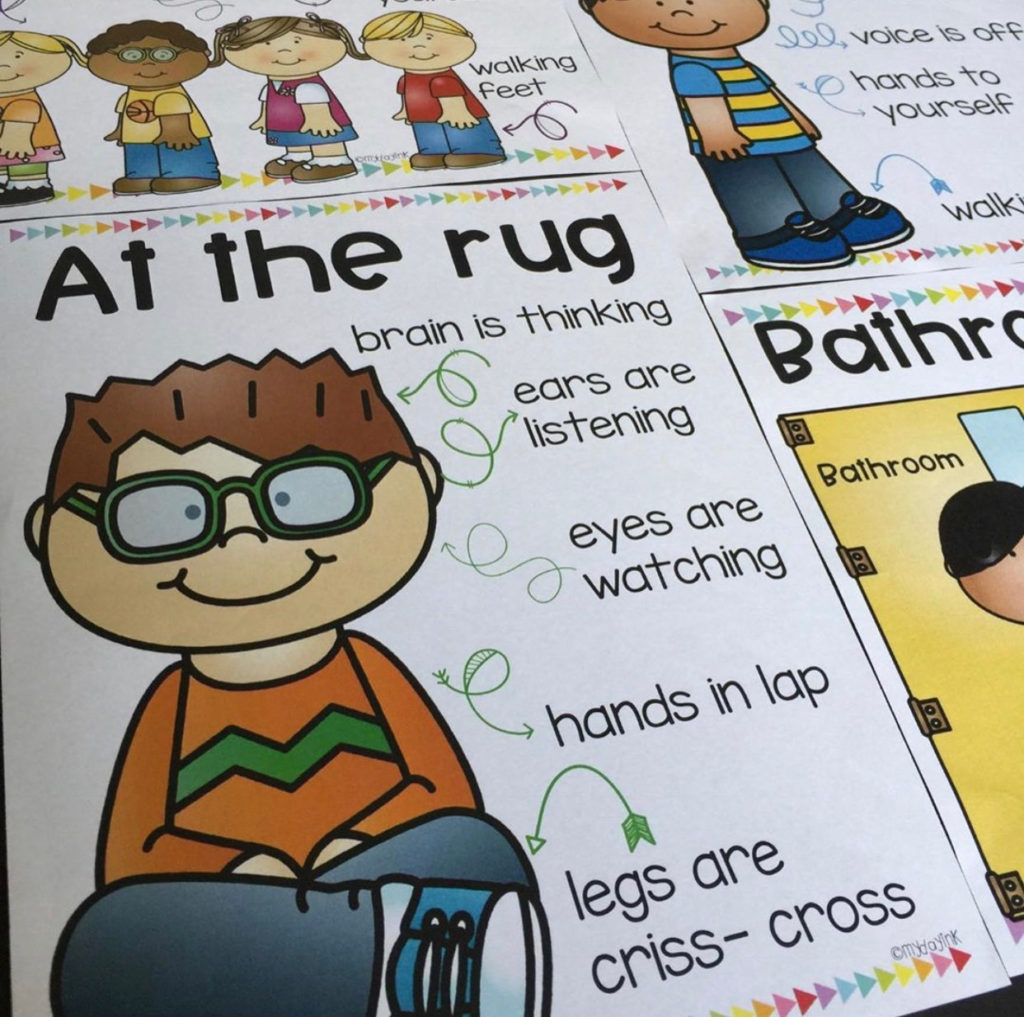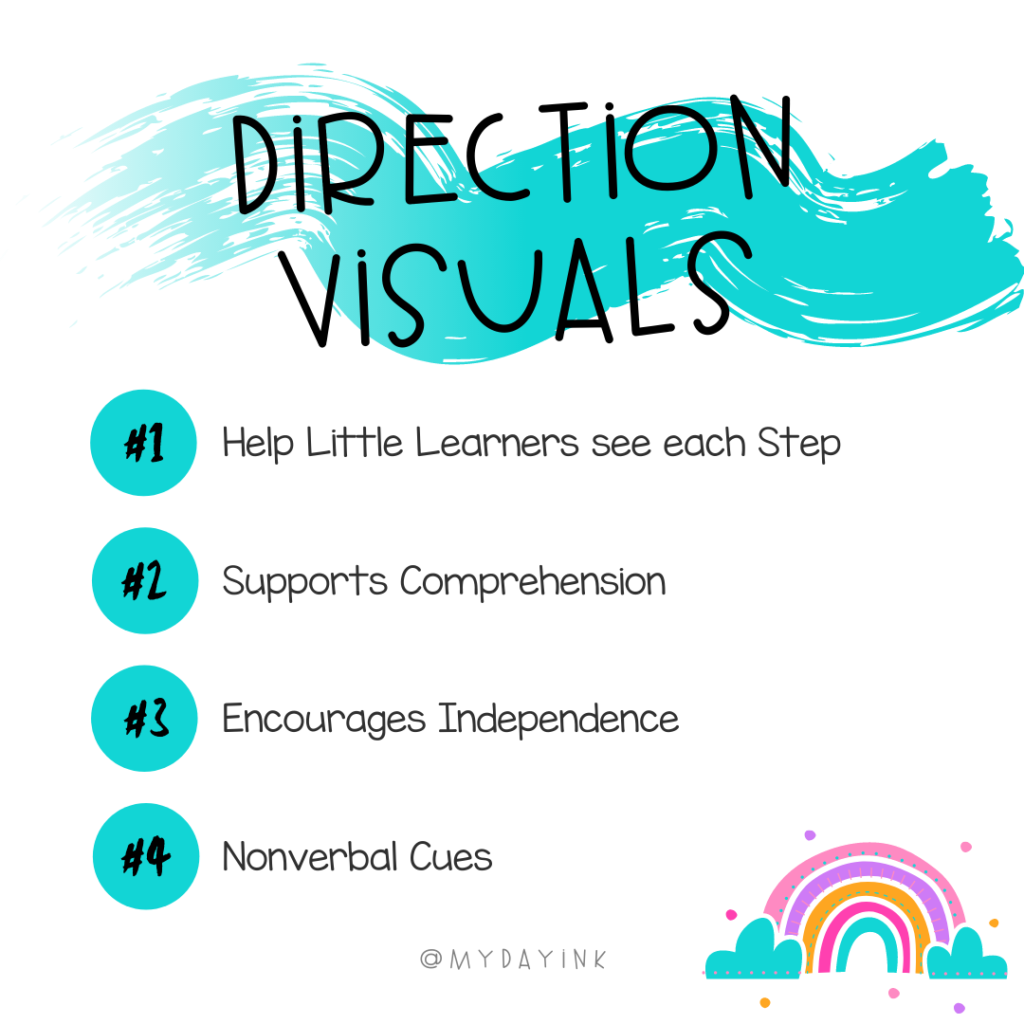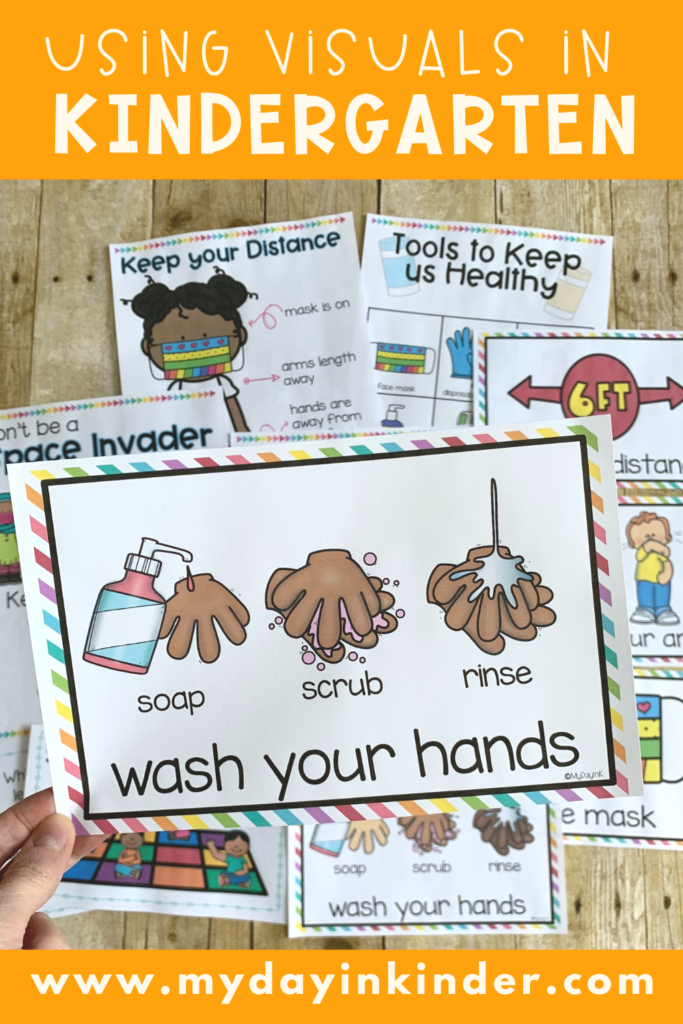Using Visuals in the Classroom

Every teacher strives to have a well-managed classroom. We know that having a classroom that runs smoothly saves us time and energy when it comes to managing our students. It also saves us instructional time by allowing us to teach more and correct behavior less often!
But how do we achieve a well-run classroom? A classroom full of routines and procedures that we don’t half to re-teach every few weeks IS possible. I have found that the answer to this in the kindergarten classroom is with visual cues for routines and procedures!
Why are visuals important for young learners?
When our students arrive to us at the beginning of kindergarten, we already know that we will be receiving a wide array of maturity and school readiness levels. Some students received formal preschool education, while others didn’t. Some students have siblings they have learned to play cooperatively with, while others have had limited interaction with peers. Some arrive to us already reading, while others struggle with the letter identification.
Visual reminders give our young learners an even playing field when it comes to being successful with routines and procedures. You will have the students who can watch you complete a procedure once and remember it for months. At the same time, you have students who will need to be reminded about a routine or procedure for the majority of the school year. Visual cues make it easy for all students to receive the support they need without you having to pause and re-teach routines.

Benefits of Visual Cues
1.) They help little learners see each step. Things are broken down in an accessible, kinder-friendly way!
2.) Visuals support comprehension. Students must ‘read’ the picture, and apply what they see to their own behavior. Because things are in picture form, with minimal text, readers of all levels can access the content.
3.) Visuals encourage independence. Instead of you taking on the burden of constantly correcting behavior, visuals give students the power to self-monitor and correct. This autonomy is so important for young students!
4.) They provide nonverbal cues, even when you’re not there. Stopping a read aloud to remind a few students how they should be sitting on the carpet steals instructional time. Making eye contact with a student and pointing at a poster while you continue to teach wastes no time, but achieves the same result!

Routines that Work Well with Visuals
Just about any routine or procedure that you teach in your classroom can be strengthened with a quick checklist, poster, or other visual cue. I reduced stress in my own classroom by using visuals for:
- Sitting at the rug
- Walking in the hallway
- Lining up
- Sitting in your chair
- Bathroom breaks
- Getting a drink
- Morning Routine
- Working in Groups
- What to Do When you Need Help
- Voice Levels
- Social Distancing Procedures
- and many more!
Getting Started
Supporting your students with visual reminders of routines and procedures is a simple but powerful way to have a more smoothly run classroom. The less time you spend re-teaching routines to your students during the week, the more time you can spend teaching them what they need to know for the next grade!
If you want a set a visual cues and reminders done for you, you can grab my set a Classroom Procedure Posters HERE! These are ready to print, laminate and hang around your room! Your students will love having a constant reminder of what to do, and you will love giving them the power to take control of their own behavior. To read more about how I use visuals in my classroom, check out THIS POST.
If you ever have any questions I’m happy to help. You can email me at mydayink@gmail.com.
Happy Teaching!

Pin it!

